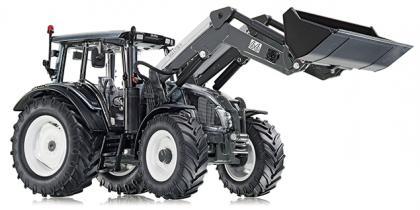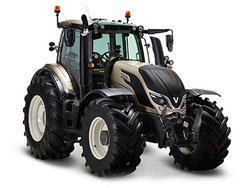
VALTRA Tractor Service Manuals & Parts PDF



History of Valtra Tractors
Some VALTRA Tractor Manuals & Parts PDF above page - A3, S2, T2, Combine Harvester BC7500 Parts Catalog, Valmet 8050 Workshop Manual, Active N134 N 154 N174.
Johan Theofron Munktell was born in 1805 in Sweden.
At the age of 17 he entered a technical college in Stockholm. In 1826 he was employed by the Royal Mint (Kungliga Myntverket), where he made improvements to the machinery minting coins. He was also a member of the team that designed and manufactured Sweden’s first printing machine.
Munktell was invited to establish a mechanical workshop in Eskilstuna. “Eskilstuna Mekaniska Werkstad” began operations in 1832, and this is considered the beginning of the industrial history of both Valtra and Volvo Construction.
Sweden began building its railway system in the 1850s, and Munktell manufactured the country’s first steam engine, the “Furstlingen”. Between 1853 and 1893 Munktell delivered a total of 31 steam locomotives. Traction engines proved to be a particularly successful product, with close to 7000 being produced by 1921.
Teofron Munktell Jr. became the head of the family company in 1857, and in 1879 the company was restructured as a joint stock company and renamed Munktells Mekaniska Verkstads Aktiebolag.
With the internal combustion engine making its breakthrough, Munktell built its first semi-diesel in 1905.
The company’s first agricultural tractor was manufactured in 1913, with a lighter model introduced in 1916. As demand for internal combustion engines grew, Munktells discontinued manufacturing steam engines.
The years following the WW1 were hard on the factory. Exports to Russia ceased, and the company’s financial position weakened. Eventually a new basis for operations was found when Munktell merged with Bolinder on its 100th anniversary in 1932.
In 1932 the merger of the mechanical companies Munktell and J & C G Bolinder was arranged, creating AB Bolinder-Munktell – also known simply as BM.
The merger had a big impact. Bolinder’s share of exports was half its turnover, and it had customers in major markets including France, Great Britain and the Soviet Union.
As Bolinder’s factory grounds in Stockholm grew ever more cramped, with the city expanding around it, all industrial operations were focused on Eskilstuna. A total of 120 railway freight cars were needed for the move.
The product lines were also rationalised at this time. Production of Munktell engines was ended, as the company chose to focus on the highly regarded Bolinder engines. Munktell’s tractors thus gained Bolinder engines.
Bolinder-Munktell’s production in the 1930s and 1940s included engines, agricultural tractors, threshing and baling machines, tractor-based road rollers, woodworking machinery and machine tools.
In the early 1940s BM developed a tractor-towed combine harvester and began supplying tractor transmissions to AB Volvo, which had also begun manufacturing tractors during the war. In the spring of 1969 Valmet was again to make history, when the model 1100, "Stronger than strong", was introduced.
As far as was known, the 1100 was the first tractor in the world with a turbocharged four-cylinder engine. The question about the first turbo in Europe is unsolved, because Volvo BM launched its own six-cylinder, charged model T 810 at about the same time, but as Valmet and Volvo BM are the same family now, the question is not relevant anymore.
The true innovation of the 1100 was, of course, the turbocharged engine. Type 411 AS was a charged version of the familiar 411 A. The power was rated at 115 hp SAE, approx. 102 hp DIN. Farmers were prejudiced against a 4.18 l 4-cylinder machine, as the competitors of the respective size had to have a six-cylinder for reaching the same power.
But many contractors understood the meaning of turbo-charging, because at the time Swedish turbocharged lorries were creating a firm reputation on the transport side.
